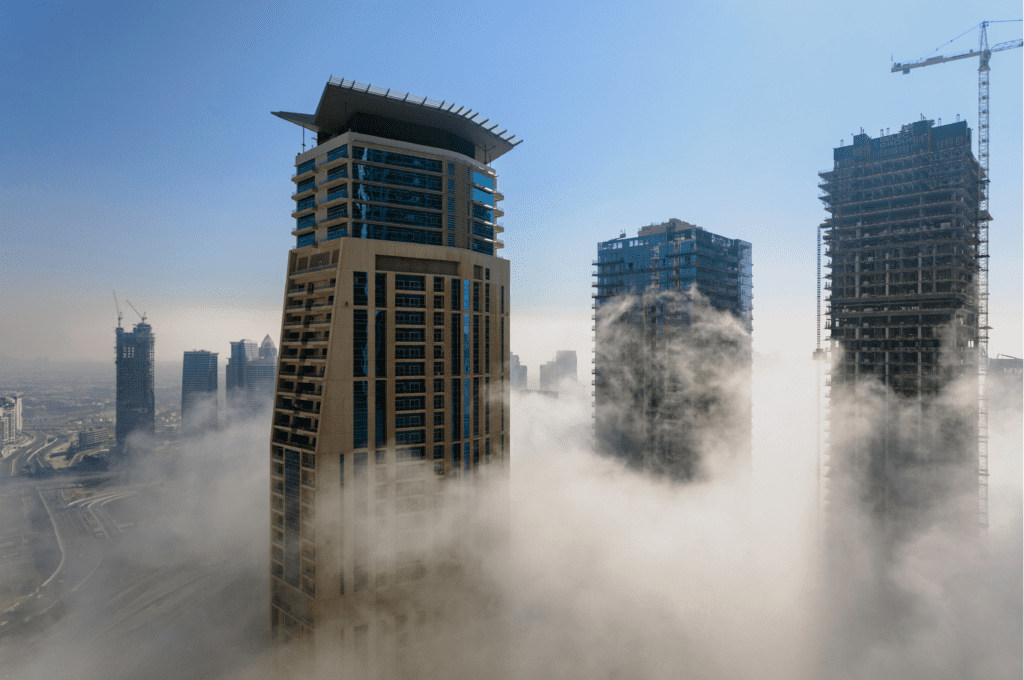
Introduction
High-rise buildings are becoming increasingly common in Maharashtra, especially in cities like Mumbai, Pune, and Nagpur. While these structures provide housing and commercial space for a growing population but pose significant fire safety challenges. Ensuring compliance with fire safety regulations is crucial to prevent disasters and protect lives. This blog explores the fire safety regulations governing high-rise buildings in Maharashtra, highlighting key requirements, compliance measures, and the responsibilities of building owners and residents.
Understanding High-Rise Fire Safety Regulations in Maharashtra
1. Definition of High-Rise Buildings
- According to the Maharashtra Fire Prevention and Life Safety Measures Act, any building exceeding 15 meters (residential) or 24 meters (commercial) in height is classified as a high-rise structure.
- Such buildings require special fire safety measures to mitigate fire hazards and ensure swift evacuation in case of emergencies.
2. Key Fire Safety Regulations
The Maharashtra Fire Prevention and Life Safety Measures Act, along with the National Building Code (NBC), mandates the following fire safety measures for high-rise buildings:
a. Firefighting Equipment Installation
- Fire extinguishers at designated locations.
- Hydrants and hose reels for fire suppression.
- Automatic sprinkler systems in basements, parking areas, and designated fire-prone zones.
- Fire pumps with backup power to ensure a continuous water supply during emergencies.
b. Fire Detection and Alarm Systems
- Smoke and heat detectors across all floors.
- Public address (PA) systems for emergency communication.
- Automated fire alarm systems connected to emergency response services.
c. Fire Exit and Evacuation Measures
- Clearly marked fire exits and escape routes.
- Minimum two staircases in high-rise buildings for emergency evacuation.
- Refuge areas on specified floors as per NBC norms.
- Emergency lighting in staircases and corridors to guide evacuation.
d. Fire Safety Drills and Training
- Regular fire safety drills for residents and employees.
- Mandatory training sessions for security personnel and building staff.
- Clear fire safety instructions displayed at key locations within the building.
e. Fireproof Construction Materials
- Use of fire-resistant materials for walls, ceilings, and floors.
- Installation of fire doors to prevent fire spread between floors.
3. Fire NOC (No Objection Certificate) Compliance
- Builders and developers must obtain a Fire NOC from the local fire department before project approval.
- The Fire NOC is granted only after the building complies with all necessary fire safety norms.
- Annual fire audits are mandatory to ensure continued compliance.
- Non-compliance may result in penalties, legal actions, or even sealing of non-compliant structures.
Challenges in Implementing Fire Safety Measures
Despite stringent regulations, several challenges hinder effective fire safety implementation in Maharashtra:
- Non-Compliance by Builders: Some developers bypass fire safety norms to cut costs.
- Lack of Awareness Among Residents: Many residents are unaware of evacuation plans and fire safety measures in their buildings.
- Aging Infrastructure: Older buildings often lack modern fire suppression systems and require retrofitting.
- Congested Urban Spaces: High population density in cities like Mumbai makes evacuation difficult during emergencies.
- Delayed Fire Safety Clearances: Bureaucratic delays in obtaining Fire NOCs and approvals hinder compliance efforts.
Steps to Ensure Fire Safety Compliance
To enhance fire safety in high-rise buildings, the following measures should be adopted:
- Strict Adherence to NBC Guidelines
- Developers and housing societies must strictly follow fire safety norms outlined in the National Building Code.
- Local authorities should conduct surprise inspections to enforce compliance.
- Regular Fire Audits and Inspections
- Conduct annual fire audits to identify and rectify safety lapses.
- Ensure timely renewal of Fire NOCs.
- Encourage third-party fire safety assessments for unbiased evaluations.
- Fire Safety Awareness Programs
- Organize fire safety workshops for residents, office employees, and building staff.
- Conduct emergency evacuation drills regularly.
- Use digital platforms to disseminate fire safety guidelines and updates.
- Retrofitting Older Buildings
- Install modern fire suppression and alarm systems in older high-rise buildings.
- Implement fire-resistant materials in renovation projects.
- Strengthen structural fireproofing measures to delay fire spread.
- Cooperation with Local Fire Departments
- Maintain close coordination with fire officials to ensure compliance and swift emergency response.
- Encourage real-time reporting of fire safety violations and prompt corrective actions.
- Establish fire emergency response teams within residential and commercial complexes.
Conclusion
Fire safety in high-rise buildings is a shared responsibility among developers, government agencies, and residents. Adhering to Maharashtra’s fire safety regulations not only ensures legal compliance but also protects lives and property. By implementing proper safety measures, conducting regular audits, and raising awareness, we can significantly reduce fire risks in Maharashtra’s growing urban landscape.
For more information on fire safety training and compliance, visit Fire and Safety Course and explore our expert-led courses on fire prevention and emergency response.
